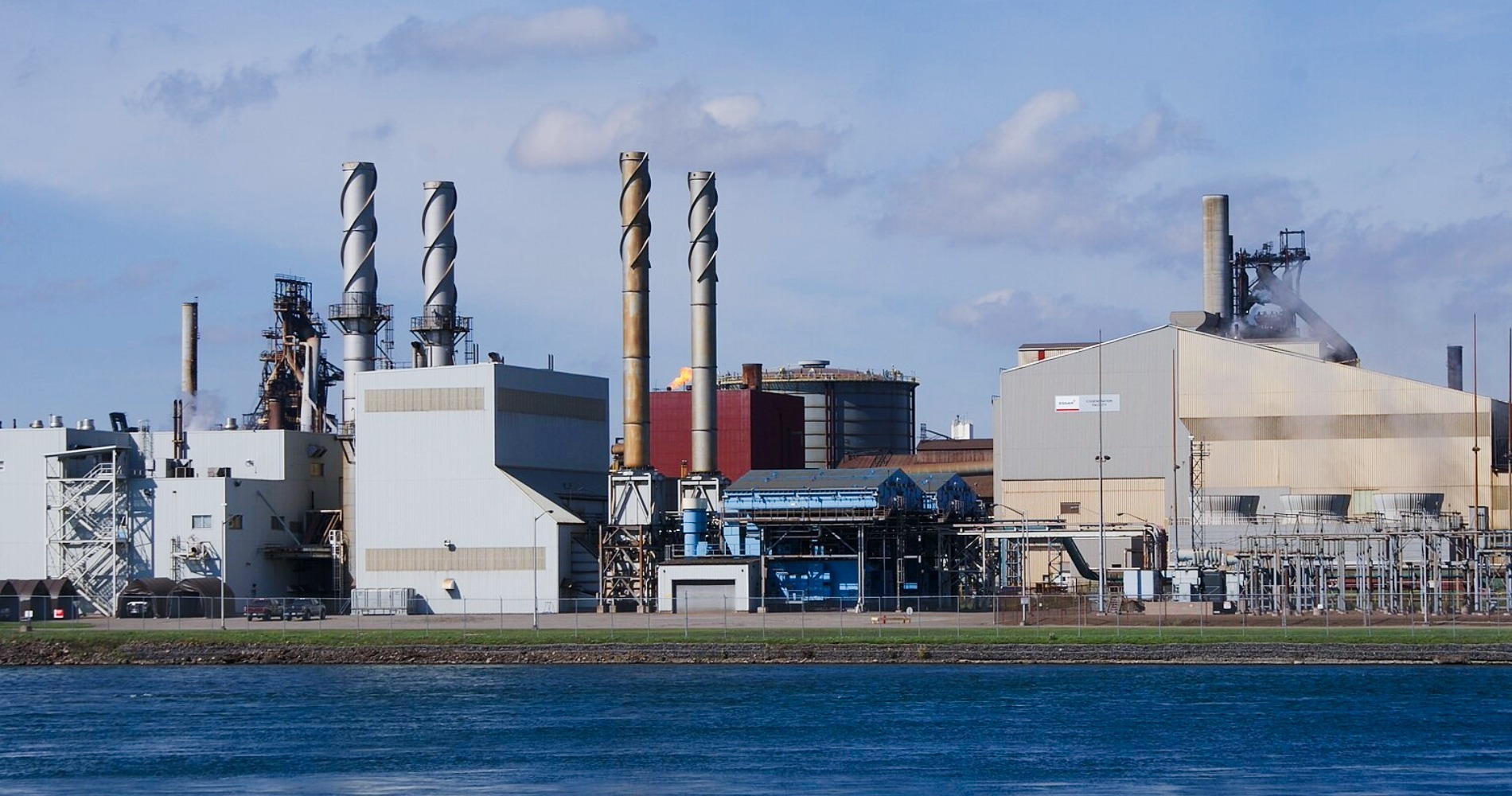The following is a re-print of the January 2025 edition of Shift Storm, the CCPA’s monthly newsletter which focuses on the intersection of work and climate change. Click here to subscribe to Shift Storm and get the latest updates straight to your inbox as soon as they come out.
The past year was the warmest in recorded history and the coming year is projected to offer little relief. This month’s tragic wildfires in Los Angeles are only the most recent reminder of the stakes of inaction. Yet the dominant political narratives in the coming year are unlikely to be driven by the urgency of the climate crisis.
Instead, Canadian climate and economic policy will be shaped by three related political forces in the coming months: the contest to replace Justin Trudeau as Prime Minister, the federal election that will be called shortly thereafter, and—through it all—the capricious and malicious bumbling of the Trump administration south of the border.
For the climate and labour movements, this is an extremely precarious moment.
As Naomi Klein famously observed in The Shock Doctrine, powerful corporate interests often seize upon the public disorientation precipitated by a crisis to advance and entrench their own interests. What are presented as necessary short-term solutions for the public good are ultimately intended to lock in longer term private gains.
Trump’s gratuitous use of manufactured crises is “shock therapy” in action. His unsubstantiated declaration of a “national energy emergency,” for example, is being used as a pretense for bypassing consultations and environmental reviews inhibiting the expansion of oil and gas drilling. The courts or future administrations may reverse course, but, once wells are in the ground, the damage is done.
In Canada, we are seeing similar efforts from fossil fuel interests. In anticipation of a 25 per cent Trump tariff, the industry and its political backers are making renewed calls to build out east-west oil infrastructure, such as new pipelines and refineries, in the name of economic diversification and energy security.
It may sound sensible, but it’s a well-worn bait-and-switch. Building new oil infrastructure will take far too long to alleviate the short-term public impacts of any Trump-induced economic crisis—including job losses and collapsing rural economies. And once the crisis has been resolved, one way or another, that infrastructure will deliver private profits for decades to come.
Fortunately, an alternative approach is possible—one that actually addresses the crisis while setting Canada up for a better future.
First, in the event Trump follows through on his unjustified but economically devastating tariff threat, Canada needs a short-term response focused on workers and communities. Emergency income and wage supports, like those employed during the COVID-19 pandemic, could keep households afloat and local governments operating for the time being.
Second, Canada needs to pivot aggressively toward genuine, long-term economic diversification and true energy security. That won’t be achieved with new oil infrastructure that sinks us into even deeper dependence on volatile, polluting fossil fuels. Instead, we need a publicly-led green industrial strategy that builds out our national electricity grid and clean manufacturing capacity.
It’s an ambitious proposal, but, with a federal leadership race underway and elections on the horizon, now is precisely the moment for ambitious proposals. The oil industry never lets a good crisis go to waste. The climate and labour movements shouldn’t either.
Storm surge: this month’s key reads
New project maps energy transition risk in every Canadian community
The new Community Transformations Project from the Institute for Research on Public Policy is a treasure trove of data and analysis concerning the labour impacts of the energy transition for Canada. I’ve been looking forward to its public release for a long time and the IRPP has delivered a really useful initial set of resources with more work planned for the coming year.
The goal of the project is to clarify the specific vulnerabilities of Canadian communities to the broader energy transition. Through an interactive map, you can see how your own community stacks up on various metrics, including the share of jobs and industrial activity exposed to disruption by global efforts to decarbonize.
The first publication to come out of the project is Empowering Community-Led Transformation Strategies, which focuses on the 68 communities across the country at greatest risk of workforce disruption. It finds a systemic lack of resources for economic development and diversification in the most vulnerable regions.
The number one recommendation to come out of the analysis is something I’ve often argued for: the necessity of targeting government investment and transition programs to at-risk regions. It’s one thing to offer billions in tax breaks for green industry. But, without geographic strings attached, that money will mostly flow to corporate headquarters in places like Calgary and Toronto, not the often rural communities that need it most.
Kudos to IRPP for publicly releasing all of the data behind the project, as well as providing clear methodological documentation to help other researchers who may want to conduct analyses of their own. I’m looking forward to whatever else IRPP does next in this area, and I’ll certainly be playing around with the data myself.
Research radar: the latest developments in work and climate
The finance industry is showing its true colours. After years of grand promises—but little progress—on climate action, four of Canada’s largest banks pulled out of the Net-Zero Banking Alliance in advance of Trump’s inauguration. It’s yet another reminder that major corporations cannot be trusted to lead on voluntary emissions reductions in the absence of meaningful regulations. Backpedaling on climate commitments won’t save these banks from the inevitable consequences of climate change, as the Canadian Climate Institute points out in a recent blog. But, for now, at least, they seem happy to make the problem worse.
Green job growth is widening equity gaps in UK labour force. A new article in the journal Frontiers in Climate, “The uneven foundations of a just transition for workers,” finds that women, racialized workers and people with disabilities are underrepresented in growth occupations for the UK’s clean economy. The author concludes that a more inclusive economy will not manifest in the absence of proactive diversification policies. Zaee Deshpande and I reached the same conclusion in the Canadian context back in 2019.
A proposal to keep EU carbon pricing alive. In a report published by the UK’s Grantham Research Institute, Industrial decarbonisation in a fragmented world, a group of European academics make an interesting case for an alternative form of carbon pricing that may be better suited to a world where countries like the U.S. (and Canada, it would seem) are backsliding. Their argument for a “climate contribution” in lieu of a “border carbon adjustment” is confoundingly nuanced, but for the real carbon pricing heads out there you’ll find some interesting ideas here.
China is miles ahead on electric vehicles. As reported by the Financial Times, electric vehicles are expected to outsell conventional vehicles in China in 2025. It’s a stunning milestone. China was barely manufacturing EVs only two decades ago and has now leapfrogged North American and European markets that had a huge head start. It flies in the face of the narrative, popular in conservative circles in Canada, that the rest of the world is not acting on climate change. Still, serious and legitimate concerns remain about China’s broader climate policy, not to mention human rights and labour abuses.
A pivotal moment for global mining justice. The Transnational Institute has released Digging Deeper, a fantastic, timely series about just transitions in the mining industry. I found the perspectives from the Global South in the “Green Industrial Policy” article to be particularly insightful, especially where they discuss the necessary shift from pro-corporate to pro-public policy approaches.
Cities and provinces pulling in different directions on climate action in South Africa. The South African NGO SouthSouthNorth released Equity & Just Transition Commitments in South Africa, which finds a lack of coherence between the climate plans of different levels of governments in that country. It’s the kind of disjointed federalism with which we’re all too familiar in Canada. Interestingly, in the South African case, the strength of climate plans correlates strongly with a city or province’s wealth. In Canada, on the other hand, some of the richest parts of the country, such as Alberta’s cities, are most resistant to climate action.
Can the just transition movement find common ground with the political centre? Another interesting case study, “Who gets to imagine a fossil-free future?”, published in Environmental Politics, is an academic study of the Swedish just transition movement. The top line finding—that a fair transition means different things to different people—is not particularly novel. More important is the finding that there are deep and potentially irreconcilable tensions between different aspects of the movement and that attempting to “find common ground” is unavoidably an exercise in shutting down radical alternatives.
UK coal mine fight a microcosm of the energy transition. A long read in Al Jazeera documents the fight over the coal industry in Cumbria, UK. It’s a thoughtful piece that humanizes the struggle between decarbonization and deindustrialization in rural regions.


